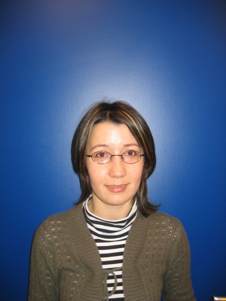Primary effects in ripple formation induced by erosion and growth of Cu(001)
Promotion date: 17 December 2008
Promotor: Prof.dr.ir. Bene Poelsema
Co-promotor: Dr.ir. Herbert Wormeester, Dr. Raoul van Gastel
| In this thesis a STM study is presented of some of the primary effects that play a role in ripple formation during ion beam erosion and epitaxial growth of Cu(001). Experimental results revealed a positional alignment of vacancy islands along the sputter direction on Cu(001). Besides the well-known channelling effect which is effective at high ion energy, it is shown that focussed collision sequences are responsible for the observed vacancy chains at low ion energy. At intermediate energy both effects are at work. Epitaxial growth of Cu/Cu(001) at grazing incidence, in the 220 K – 310 K temperature window, revealed a surface morphology dominated by rectangular mounds, with their longest side perpendicular to the plane of deposition. This asymmetry is the result of the interplay between the steering effect (which generates an imbalance in the incoming atomic flux) and the temperature dependent surface diffusion. |
Your thesis project involved fundamental research. Are applications visible at the horizon?
My research was fundamental but of course there are possible practical applications further at the horizon. To tune the physical and chemical properties of surfaces by controlling the morphological characteristics of self-assembled nanostructures during ion erosion and epitaxial growth, is a strategy that is becoming more and more popular nowadays.
Does experimental work suit you best?
Yes. I have enjoyed to define and workout experiments, to analyze results and draw conclusions. The feeling that all of your hard work pays off, is unsurpassed. On the other hand, if results are not there, I am always challenged why it doesn’t work.
In this research project, preparing atomic flat structures, required a lot of attention and hard work.
Imaging the copper surface with STM and obtaining atomically resolved images at low temperature can be quite a cumbersome task.
Do you see a future career as an academic researcher?
I now apply for positions outside university. I like to do applied research in a more dynamic environment. From my master period until now, I studied the same phenomena. It is important to change topic, to revive my interest.
What - do you think -, is important for the MESA+ institute in future?
As an institute, MESA+ has a strong name internationally.
It is nice to see how people work on a broad variety of subjects, concerning different aspects of nanotechnology. The spin off companies surrounding MESA+, gives extra strength.
I very much enjoyed the transfer of knowledge with colleagues, for example during the MESA+ days. Perhaps interviews like this should take place not only at the end of the thesis projects, but also while work is still in progress. Sharing in an early stage helps to benefit from the knowledge and experiences of your colleagues.

